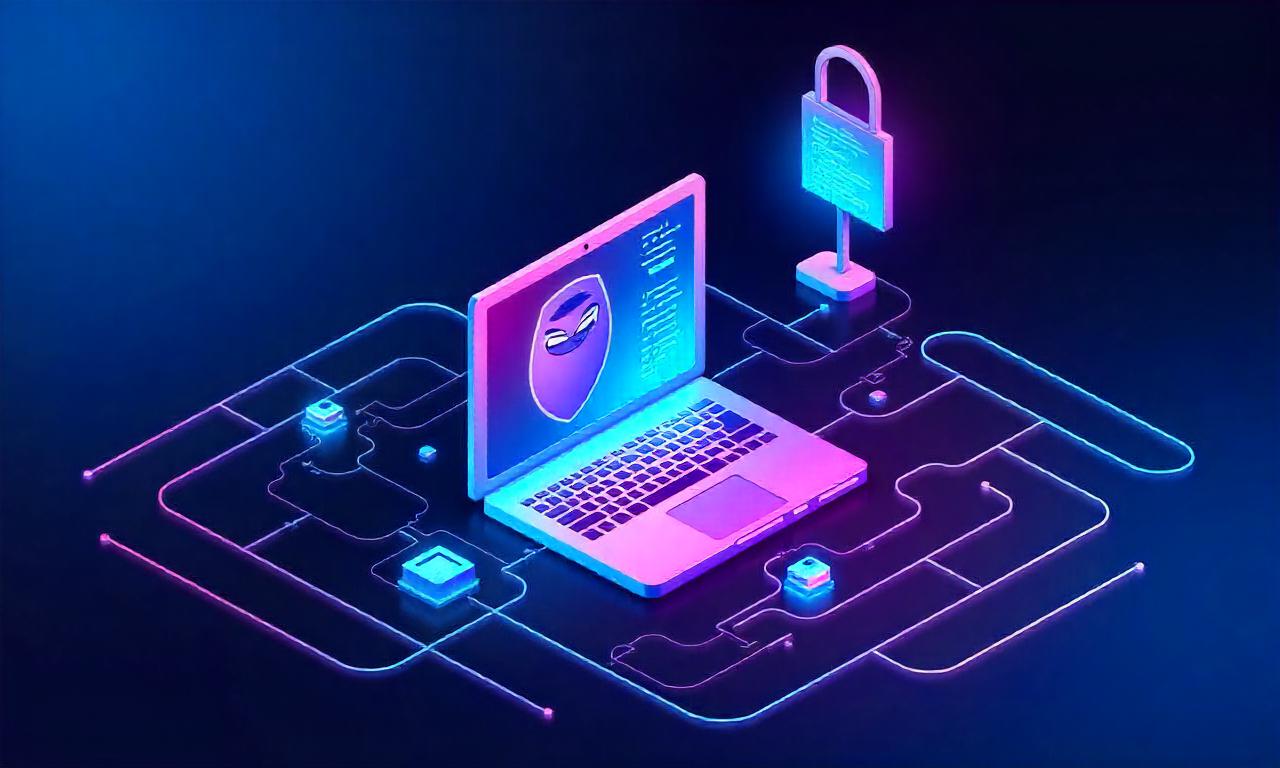Organizations are accelerating cloud adoption to gain agility, reduce costs, and innovate faster—but the attack surface expands just as quickly. From misconfigurations and identity sprawl to visibility blind spots and compliance drift, the common cloud security challenges can feel relentless. The good news: with the right architecture, controls, and culture, you can turn the cloud into a security advantage rather than a liability.
Table of Contents
ToggleWhy Cloud Security Is Different in 2025 and Beyond
Cloud security is not just “datacenter security in someone else’s building.” The cloud is API-driven, elastic, and shared by design. Those qualities boost speed and resilience, yet they also create new pathways for mistakes and misuse. Security teams must adapt to ephemeral infrastructure, declarative tooling, and continuous delivery rhythms that don’t pause for manual approvals.
Unlike traditional environments, cloud assets change minute-to-minute: instances scale up and down, containers are rescheduled, serverless functions spin up on request, and identities (both human and machine) multiply. In this dynamic world, spreadsheets and one-time audits fall short. You need continual assurance, policy-as-code, and automated guardrails that enforce intent at scale.
Another difference is the shared responsibility model. Your cloud service provider (CSP) secures the underlying infrastructure, but you remain responsible for how you configure services, manage identities, encrypt data, and monitor activity. Misunderstanding this division remains a top root cause of breaches. Treat the cloud as a co-managed ecosystem where accountability is explicitly defined and tested.
The Shared Responsibility Reality
Many organizations assume their CSP “handles security.” In reality, providers protect the physical data centers, the hypervisors, and certain managed services, while customers must secure data, identities, configurations, and application code. Failure to delineate duties—especially in multi-cloud—creates coverage gaps.
To avoid surprises, document a responsibility matrix per service (e.g., IaaS, PaaS, SaaS) and per control (encryption, logging, patching, backup). Then validate it via continuous control monitoring (CCM). Clear accountability ensures that when auditors ask “who owns what,” you have a defensible, current answer rather than a best guess.
Ephemeral and API-First Stacks
Cloud-native stacks are de facto API-first. Every action—from provisioning to security changes—can be automated. This is powerful, but it also means a single misconfigured template can replicate risk across thousands of resources in seconds. Traditional change boards can’t keep pace.
Embrace infrastructure as code (IaC) with pre-commit security checks, verified modules, and drift detection. This way, your “secure default” templates are reused and tested, not re-invented under pressure. When security becomes code, it scales with your engineering velocity.
Challenge #1: Misconfigurations and Shared Responsibility Gaps
Misconfiguration is the most pervasive cloud risk. Public S3 buckets, open security groups, overly permissive IAM policies, and disabled logging are frequent culprits. Because cloud controls are granular and plentiful, it’s easy to make a small mistake that has large blast radius.
This challenge is amplified in multi-account/multi-subscription setups. Each environment—dev, test, prod—often has different controls, inherited policies, and exceptions. Without centralized policy evaluation and consistent baselines, “snowflake” environments drift out of compliance.
Finally, misunderstanding shared responsibility leads to unclear handoffs. Who ensures KMS keys rotate? Who remediates public snapshots? Without clarity, issues persist. Adopt a culture of “secure by default” where guardrails prevent misconfigurations from ever deploying.
Typical Missteps to Watch
Common pitfalls include:
- Storage exposed to the public internet.
- Overly broad IAM roles (e.g., “:” permissions).
- Disabled or incomplete logging (e.g., missing flow logs).
- Unencrypted data at rest or in transit.
- Inconsistent tag governance, making assets hard to track.
Each misstep seems small in isolation, but attackers chain them together. For example, a leaked access key with broad permissions plus missing logs equals stealthy exfiltration. Secure the small stuff, and you prevent the big breach.
How to Fix with CSPM and Guardrails
Use Cloud Security Posture Management (CSPM) to continuously detect misconfigurations across accounts and regions. Pair it with policy-as-code to enforce mandatory controls (e.g., deny public storage unless explicitly approved). Automate remediation where safe—quarantine public buckets, fix security groups, or enable logging as a default.
Complement CSPM with IaC scanning in CI/CD. By shifting left, you catch risky patterns before deployment. Over time, measure “mean time to remediate (MTTR) misconfigurations” and “percentage of resources governed by guardrails” to ensure your posture is actually improving.
Challenge #2: Identity, Access, and Zero Trust at Scale
In the cloud, identity is the new perimeter. You’ll juggle human users, service principals, roles, short-lived tokens, and workload identities across multiple clouds. Over-privilege is common because rights accumulate over time as teams rush to unblock delivery.
Attackers target identity via phishing, token theft, OAuth abuse, and exploiting stale credentials. Compromising one over-privileged identity often unlocks lateral movement and data access. The solution is Zero Trust—assume breach, minimize privileges, verify continuously, and segment everything.
A mature identity strategy aligns SSO/MFA with least privilege, short-lived credentials, and continuous evaluation of entitlements. With the right tools and processes, you shrink exposure without slowing developers.
Over-privileged Identities and Key Sprawl
“Just make it work” requests create policies with wildcard permissions. Months later, no one remembers why they exist. Meanwhile, API keys leak into repos, CI logs, or chat threads. Machine identities multiply for microservices, each needing lifecycle management.
Address sprawl with Cloud Infrastructure Entitlement Management (CIEM) to visualize and right-size permissions. Rotate and vault secrets by default; prefer federation and short-lived tokens to long-lived keys. Tag identities with owners and expiry dates to make cleanup habitual rather than heroic.
IAM Hardening Playbook (SSO, MFA, JIT, ABAC)
- Centralize identity with SSO and enforce MFA for all administrative roles.
- Use least privilege via role-based access control (RBAC), then evolve to attribute-based access control (ABAC) to handle scale and context.
- Adopt just-in-time (JIT) access: grant temporary elevated privileges with approvals and session recording.
- Prefer role assumption and workload identity federation over static keys; enforce automatic key rotation for any remaining secrets.
These patterns align with Zero Trust principles and reduce both the likelihood and impact of compromised credentials.
Challenge #3: Data Protection, Encryption, and Sovereignty
Data is the target. Cloud simplifies storage and sharing, but without classification and controls you risk oversharing, shadow data, and sovereignty violations. Regulations add another dimension: where data resides, who can access it, and how it’s processed all matter.
Data security in the cloud spans lifecycle stages: create, store, use, share, and delete. Strong encryption is necessary but insufficient. You also need to limit data spread, enforce access by business need, and track lineage so you can answer “who touched what and when.”
Data sovereignty and residency can be tricky in multi-region architectures and when using managed AI services. Design with explicit locality controls and contractual safeguards so you meet both legal and customer expectations.
Classify and Minimize Data by Design
Start by mapping data types (PII, PHI, PCI, IP) and their sensitivity. Use automated discovery (DSPM—Data Security Posture Management) to find shadow buckets, snapshots, or backups containing sensitive data. Apply labels/tags so policies can act contextually.
Minimize collection and retention. If you don’t store it, you don’t have to secure it. Implement lifecycle policies to archive or delete stale data. For analytics, consider tokenization or synthetic data to reduce exposure while preserving utility.
Encrypt Everywhere and Manage Keys
Encrypt data at rest with customer-managed keys (CMKs) when feasible; for highly sensitive data consider bring-your-own-key (BYOK) or hold-your-own-key (HYOK) models. Enforce TLS in transit everywhere, including inter-service traffic.
Key management is paramount. Centralize key lifecycle, rotate regularly, restrict key use with resource policies, and enable comprehensive auditing. For specialized use cases, evaluate format-preserving encryption or confidential computing for processing sensitive datasets with hardware-backed isolation.
Challenge #4: Visibility, Detection, and Response in the Cloud
You can’t protect what you can’t see. Cloud environments generate massive telemetry—API logs, flow logs, workload logs, and application traces. The challenge is curating signal from noise across multi-cloud and hybrid estates.
Effective detection aligns known attack techniques (MITRE ATT&CK for Cloud) with cloud-native telemetry. You’ll need enrichment (tags, account ownership, business context) to prioritize alerts. Without context, teams drown in false positives and miss the real threats.
Incident response must match cloud speed. Playbooks should be automated and reversible: quarantine instances, revoke tokens, snapshot disks, and roll back misconfigurations via IaC. Practice game days so responders understand cloud specifics like role assumption and service quotas.
What to Log and How to Correlate
Log the control plane (e.g., cloud API calls), data plane events, network flows, and identity activity. Retain enough history to investigate stealthy attacks. Centralize logs per cloud and account, normalize schemas, and forward to a SIEM with cloud-aware analytics.
Correlation requires context. Enrich events with asset tags (environment, owner, sensitivity) and IAM details (role, session issuer). Use detections for suspicious patterns: unusual geo-location, privilege escalation, mass snapshot creation, or public ACL changes.
Automate Response with SOAR and IaC
Define runbooks as code. For example, on detection of a leaked key, automatically disable credentials, rotate secrets, and notify owners. For misconfigurations, trigger an IaC rollback rather than manual changes to keep desired state authoritative.
Measure response metrics—MTTD, MTTR, and containment time. Over time, shift routine tasks to SOAR and reserve humans for complex triage. Automation reduces toil and prevents recurring issues from wasting analyst cycles.
Challenge #5: Securing Containers, Kubernetes, and Serverless
Modern apps rely on containers and serverless functions. These increase velocity but add supply chain risks and runtime complexities. Vulnerable base images, poisoned dependencies, or misconfigured Kubernetes controls can open doors.

Kubernetes exposes multiple layers: cluster, node, control plane, and workloads. You must secure each with least privilege, network policies, admission controls, and runtime defenses. For serverless, the blast radius is smaller per function, but function counts can explode, making visibility and least privilege vital.
Adopt a Cloud-Native Application Protection Platform (CNAPP)—combining CSPM, CWPP (workload protection), CIEM, and sometimes DSPM—to unify risk across code, cloud, and runtime. Unification reduces blind spots and duplicate tooling.
Supply Chain and Image Integrity
Shift left with software composition analysis (SCA) to find vulnerable dependencies and license issues. Sign images (e.g., Sigstore/cosign) and verify signatures in the cluster. Maintain a curated, minimal base image library and patch frequently.
For serverless, scan deployment packages and dependencies; remove unused libraries to shrink the attack surface. Use private registries and enforce provenance policies so only trusted artifacts deploy.
Runtime Controls and Policy as Code
At runtime, apply Kubernetes network policies, pod security standards, and admission controllers to block risky deployments (e.g., privileged containers). Monitor abnormal process/network behavior with eBPF-based or agent solutions.
Express policies as code (OPA/Gatekeeper or Kyverno) and test them in CI. This codifies expectations—no root containers, no hostPath mounts, required labels—and ensures enforcement before workloads hit production.
Challenge #6: Compliance, Governance, and Cost Control Without Friction
Regulatory frameworks (ISO 27001, SOC 2, PCI DSS, HIPAA, GDPR) intersect with cloud-native complexity. Manual evidence collection is brittle. Instead, automate control mapping and evidence gathering so compliance becomes continuous, not a once-a-year sprint.
Governance is broader than compliance. It includes tag hygiene, account vending processes, and exception management. Clear, automated guardrails empower teams to move fast safely, creating a “paved road” rather than a “security roadblock.”
Cost matters too. Over-provisioned security tools or noisy detections waste budget and attention. Align security and FinOps to optimize spend on controls that materially reduce risk, not just “check a box.”
Map Controls to Frameworks Automatically
Use tools that map your cloud controls to multiple frameworks simultaneously. For instance, encryption at rest and IAM hardening measures can satisfy overlapping requirements across frameworks, minimizing duplicate effort.
Continuously monitor control status and generate audit-ready reports. When auditors ask for evidence, you export logs and dashboards rather than scramble for screenshots. This reduces audit fatigue and increases trust.
Build a FinOps-SecOps Partnership
Security consumes compute (e.g., log retention, scanning) and licensing. Collaborate with FinOps to quantify value: risk reduced per dollar, cost per detection, and storage optimization for logs (hot vs. cold tiers).
By jointly prioritizing high-impact controls and trimming low-value noise, you improve both security outcomes and unit economics. This partnership is a durable competitive advantage.
Challenge #7: Skills Gap, Culture, and DevSecOps Adoption
Cloud security demands new skills—policy-as-code, CI/CD integration, and identity-centric design. Hiring alone won’t close the gap; you need systematic enablement, reusable templates, and clear feedback loops.
Security culture thrives when teams share ownership. If developers feel security blocks releases, they will route around controls. Provide guardrails and self-service tooling so secure choices are the easiest choices.
Measure what matters: fewer critical misconfigurations, faster remediation, and higher test coverage in pipelines. Celebrate improvements; culture changes when success is visible and repeatable.
Upskill with Secure-by-Default Templates
Create golden templates for networks, accounts, and workloads with embedded security. Offer these as internal products with documentation, examples, and quickstarts. Teams that start with a secure baseline avoid many pitfalls.
Run regular game days and brown-bag sessions on topics like IAM least privilege, secret management, or Kubernetes policies. Hands-on practice accelerates learning and normalizes secure habits.
Metrics that Matter and Executive Buy-in
Track leading indicators: percentage of resources created via approved IaC modules, time to patch base images, or coverage of MFA/JIT access. These drive outcomes earlier than lagging indicators like incident counts.
Secure budget and sponsorship by framing security as an enabler—reduced downtime, faster audits, and unlocked customer segments that demand strong controls. Executives support what they see advancing business goals.
A Practical 90-Day Cloud Security Roadmap
A clear plan helps you move from theory to practice. Use a phased approach that delivers visible wins without boiling the ocean.
Phase 1 (Days 0–30): Baseline and Visibility
- Inventory accounts/subscriptions and enable centralized logging (API, flow, and workload logs).
- Deploy CSPM, connect all accounts, and triage top 10 critical findings.
- Enforce MFA for admins and rotate any long-lived keys.
Phase 2 (Days 31–60): Prevent and Protect
- Implement policy-as-code guardrails to block public storage and risky security groups.
- Roll out CI/IaC scanning in pipelines; adopt signed, minimal base images.
- Begin CIEM rollouts to right-size the most privileged roles.
Phase 3 (Days 61–90): Detect and Respond
- Stand up cloud-aware detections in SIEM; automate high-confidence responses with SOAR.
- Pilot CNAPP for unified visibility across cloud, container, and runtime risks.
- Establish KPIs/OKRs; report posture trends to leadership and audit stakeholders.
Tools, Teams, and Ownership
Map tools to owners—who tunes CSPM, who writes policies, who handles IAM requests. Clarify escalation paths and SLAs for security issues. Without clear ownership, automation stalls.
Create a cross-functional cloud security council—security, platform, DevOps, data, and compliance—to align priorities and resolve trade-offs quickly. This is your forum for decisions on exceptions, risk acceptance, and roadmap.
Measure What You Improve
Define baseline metrics today and target deltas in 90 days:
- Reduce critical misconfigurations by 60%.
- Achieve 100% MFA for admins and 80% JIT coverage for privileged tasks.
- Cut misconfiguration MTTR in half via automated remediation.
Publish a simple monthly scorecard to keep momentum and celebrate progress.
Table: Cloud Security Challenges, Controls, and KPIs
| Challenge | Primary Controls | Representative Tools/Patterns | KPIs to Track |
|—|—|—|—|
| Misconfigurations | CSPM, policy-as-code, IaC scanning | Guardrails, drift detection | Critical findings count; MTTR |
| Identity sprawl | SSO/MFA, CIEM, JIT, ABAC | Federation, short-lived credentials | Over-privilege reduction; key age |
| Data protection | DSPM, encryption, key management | CMKs, BYOK/HYOK, DLP | % sensitive data encrypted; data lineage coverage |
| Detection/response | SIEM, SOAR, EDR/CWPP | Cloud-native logs, automated playbooks | MTTD/MTTR; false positive rate |
| Containers/serverless | Image signing, admission control | SCA, OPA/Kyverno, CNAPP | Vulnerability SLA; policy violations |
| Compliance/governance | CCM, evidence automation | Framework mapping, tagging | Control coverage; audit readiness time |
FAQ: Common Cloud Security Questions (Q & A)
Q: What is the biggest cloud security risk today?
A: The most common and impactful risk is still misconfiguration—public data exposure, weak IAM, and disabled logging. Attackers exploit simple mistakes that scale across environments.
Q: How is cloud security different from on-prem?
A: Cloud is highly dynamic and API-driven, with shared responsibility between you and the provider. Controls are more granular and programmable, which enables automation—but also means errors can propagate faster.
Q: Do I need a different security stack for each cloud?
A: Use cloud-native controls where possible, then layer multi-cloud platforms (CSPM/CIEM/CNAPP/SIEM) that normalize findings and reduce tool sprawl. Standardize processes and policies, not just tools.
Q: How do I start with Zero Trust in the cloud?
A: Begin with identity: enforce SSO/MFA, adopt least privilege with CIEM, and move to short-lived credentials. Then segment networks and workloads, verify continuously, and log everything.
Q: What’s the fastest win I can deliver this quarter?
A: Turn on centralized logging, enforce MFA for admins, connect CSPM to all accounts, and block public storage by default. These steps immediately reduce risk and improve visibility.
Conclusion
Cloud security becomes manageable when you treat it as a continuous, automated program, not a one-time project. The path forward is clear: codify guardrails, minimize identity and data risk, unify visibility, and automate your response. Pair these technical controls with a culture that favors secure defaults and shared ownership, and you’ll transform the cloud from a source of anxiety into a durable advantage.
In practice, this means adopting CSPM/CIEM/CNAPP to harden posture, integrating detection and response into your pipelines, encrypting data with strong key governance, and measuring what matters—MTTD, MTTR, misconfiguration counts, and least-privilege coverage. Align with FinOps to fund what works and retire what doesn’t. Keep iterating, and your security will improve at the same cadence as your cloud.
Summary (English)
This article explains why cloud security differs from traditional environments and details seven major challenges—misconfigurations, identity sprawl, data protection, visibility/response, container/serverless risks, compliance/governance, and the skills gap. For each, it provides actionable solutions: CSPM and policy-as-code guardrails, Zero Trust IAM with CIEM and JIT access, encryption and DSPM for data, cloud-aware SIEM/SOAR for detection and response, CNAPP for container/serverless security, automated compliance, and cultural change via DevSecOps. A 90-day roadmap and a comparison table map controls to KPIs. The key message: automate guardrails, adopt least privilege, encrypt and monitor everything, and measure progress continuously to turn cloud security into a strategic advantage.
















